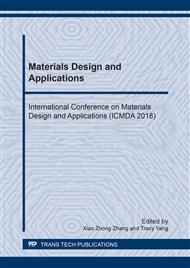p.43
p.51
p.61
p.69
p.77
p.83
p.89
p.97
p.107
Analytical Model for Prediction of Damping Properties of Particulate-Filled Polymer Composite
Abstract:
To work out effective damping materials it is necessary to perfect analytical dependences linking dynamic properties of a composite with its structure-forming parameters. The analytical model of the particulate-filled polymers, based on the method of strain energy, convenient for engineering use and allowing to predict damping properties of a composite more reliable is given in this article. The detailed leading-out of formulas for scaling of a bulk modulus and loss factor of both two-phase and three-phase model of a composite is presented. Comparison of numerical values of damping characteristics under the derived formulas with experimental researches show that the offered model allows not only to show a qualitative pattern of dependence of dynamic behavior of a composite from degree of admission, but also to receive comprehensible quantitative results.
Info:
Periodical:
Pages:
77-82
Citation:
Online since:
October 2018
Authors:
Keywords:
Price:
Сopyright:
© 2018 Trans Tech Publications Ltd. All Rights Reserved
Share:
Citation:


